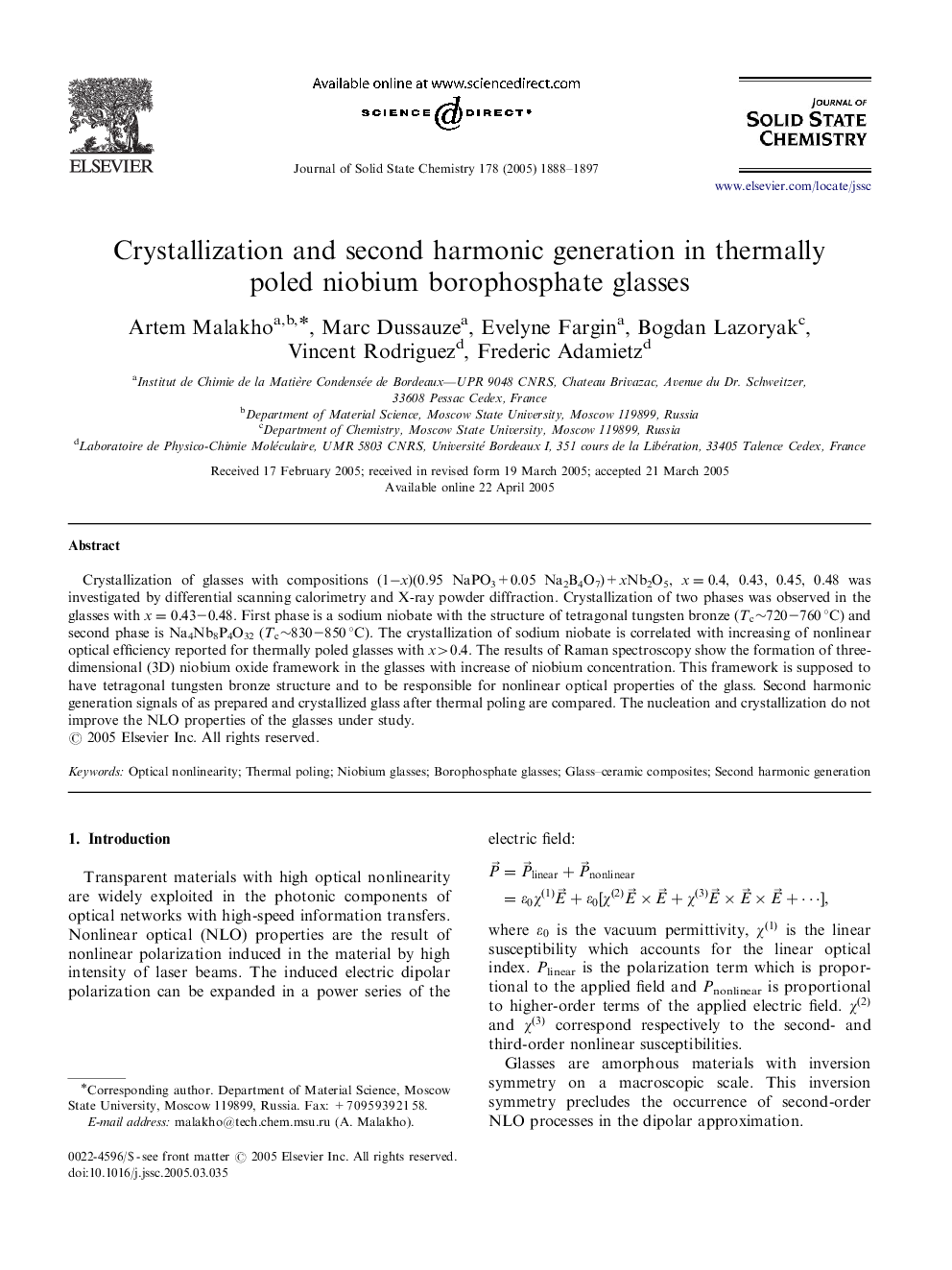| Article ID | Journal | Published Year | Pages | File Type |
|---|---|---|---|---|
| 1334156 | Journal of Solid State Chemistry | 2005 | 10 Pages |
Crystallization of glasses with compositions (1−x)(0.95 NaPO3+0.05 Na2B4O7)+xNb2O5, x=0.4x=0.4, 0.43, 0.45, 0.48 was investigated by differential scanning calorimetry and X-ray powder diffraction. Crystallization of two phases was observed in the glasses with x=0.43–0.48x=0.43–0.48. First phase is a sodium niobate with the structure of tetragonal tungsten bronze (Tc∼720–760°C) and second phase is Na4Nb8P4O32 (Tc∼830–850°C). The crystallization of sodium niobate is correlated with increasing of nonlinear optical efficiency reported for thermally poled glasses with x>0.4x>0.4. The results of Raman spectroscopy show the formation of three-dimensional (3D) niobium oxide framework in the glasses with increase of niobium concentration. This framework is supposed to have tetragonal tungsten bronze structure and to be responsible for nonlinear optical properties of the glass. Second harmonic generation signals of as prepared and crystallized glass after thermal poling are compared. The nucleation and crystallization do not improve the NLO properties of the glasses under study.
Graphical abstractOptical transmission spectra for as-prepared NBP48 glass, sample of NBP48 glass heated at 680 °C for 100 h (dashed line) and crystallized samples obtained by heating of the same glass for 5 h at the temperatures 720–740 °C.Figure optionsDownload full-size imageDownload as PowerPoint slide
